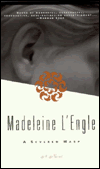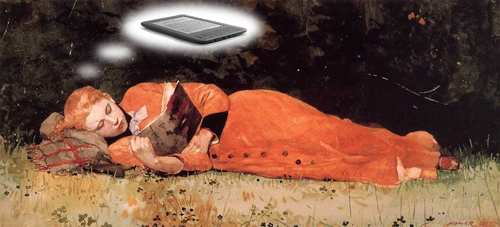A Severed Wasp
 How do you heal human brokenness? It’s a question–the main question–Madeleine L’Engle explores in A Severed Wasp. The answer is a little surprising, given that the novel is set within the close-knit framework of relationships involved with an Episcopal cathedral in New York. L’Engle, an author who’s been faulted for being too heavy-handed about her Christian beliefs in some of her fiction, presents art as the transcendent force in this novel’s world.
How do you heal human brokenness? It’s a question–the main question–Madeleine L’Engle explores in A Severed Wasp. The answer is a little surprising, given that the novel is set within the close-knit framework of relationships involved with an Episcopal cathedral in New York. L’Engle, an author who’s been faulted for being too heavy-handed about her Christian beliefs in some of her fiction, presents art as the transcendent force in this novel’s world.
The question is posed early. Katherine Forrester, the protagonist of L’Engle’s first novel The Small Rain, returns in A Severed Wasp as Madame Vigneras, an old woman settling in New York to come to terms with her memories after a long and dazzling career as a concert pianist. She’s immediately drawn into the cathedral community by her old friend Felix Bodeway, now a retired bishop. At a social gathering, the present bishop reads a passage from George Orwell to his fellow churchmen: “[A wasp] was sucking jam on my plate and I cut him in half,” reads Bishop Undercroft. “He paid no attention, merely went on with his meal, while a tiny stream of jam trickled out of his severed esphagus. Only when he tried to fly away did he grasp the dreadful thing that had happened to him. It is the same with modern man, and there was a period–twenty years, perhaps–during which he did not notice it. It was absolutely necessary that the soul be cut away. Religious belief, in the form that we had known it, had to be abandoned.”
The action of the novel bears out Orwell’s vision. The church is presented as under seige, a place that attracts black magic, where tragedy tears at families, dark secrets fester, and priests, sometimes assaulted and killed, carry heavy rings of keys to gain access. Individuals labor under painful memories, emotional injuries, and burdens of guilt for sins long past. Into this close-knit world comes Katherine Vigneras, carrying her own load of unexamined memories from a long life.
Her life has had its share of pain, but as she counsels a young, grieving organist, “Being alive hurts. I have found it best not to rush for the aspirin bottle.” This is her secret: loving rather than hiding behind a protective shell. As the novel unfolds, this quality of character combines with her status as both celebrity and safe “outsider,” who’s new to the place and lacks religious convictions, to make her a catalyst for change. Everyone confides in her. Everyone looks to her to dispense wisdom. Strangers and friends, religious and irreligious, young and old, regard her as the source of the wisdom they need.
For the most part, she delivers. In the closing pages, when Bishop Undercroft himself confesses a sense of failure in resembling Orwell’s severed wasp (on his knees, where people seem to find themselves when talking to Katherine), she replies, “Love is what it’s about, isn’t it? Not success?” This is the story’s gospel, set forth to replace the one Orwell insists needs to be abandoned. It’s transmitted to the world through loving acceptance of all behavior, and art. Numerous discussions of painting and music lead up to the final scene, in which Katherine gives a benefit concert. In a church we might expect the Holy Spirit to come and touch the coal of fire to the artist’s waiting lips, but not here. “When the music had fully entered into her,” writes L’Engle, “she began to play.” Music, not someone or something beyond, is the inspiring power here.
How do you judge a book’s quality? If it’s measured in your eagerness to turn the page, this book surely succeeds. L’Engle’s strong, elegant writing never wastes a syllable, and she deftly weaves back and forth between flashbacks and the present, building suspense, building interest. She writes with compassion about human suffering of all kinds. She laces the novel convincingly to its historical context. In most cases, she creates complex, believable characters. And she gives a fascinating study of an artist’s mind and attitude toward her work.
I loved the book despite having two complaints. First, Katherine is an exception among the novel’s ”believable characters.” She’s too perfect for my taste. Does anyone exist who virtually always swallows the sharp retort? Could there be someone so immediately recognizable to people of all ages as a trustworthy confidante? Are people really as worshipful of an accomplished pianist as the people in this novel are? In this sense Katherine reminds me of other L’Engle characters–Mrs. Murray, for instance, in A Wrinkle in Time, who casually changes the course of analytical chemistry while being a dazzling beauty, an always-perfectly-wise mother, and a good cook given a Bunsen burner and a stew pot. Like her, Katherine seems more like a redeeming superhero than a credible person.
I felt like Katherine was warped out of believability by the thematic agenda L’Engle had in mind for her. She is the spokesperson for the novel’s ”new” religion, and it’s one that appears to be almost entirely human. This is my second reservation about the novel, because it’s neither new nor particularly convincing. God never makes an appearance in the story as a redeemer of experience or a healer of wounds. Rather, people confess to and lean on each other. Katherine, and her music, are the most frequent vessels of forgiveness and peace. Though she herself is agnostic, and remains that way despite her entanglement with a church community, the churchmen look to her for answers. It’s not divine love expressed through human hands, but simply human love, that heals.
But in the end these kinds of questions are why I will probably reread the story someday, and why I loved it. It was a thoroughly absorbing read. It made me think about what I believe, and search even after I closed the book for ways to reconcile all the threads L’Engle is weaving in the story. Above all it’s a powerful argument for the healing power of love expressed through art, or through the artistic vocation. Whatever your kind of brokenness, and whatever your convictions about how to heal it, you leave this book eager to test your wings.


